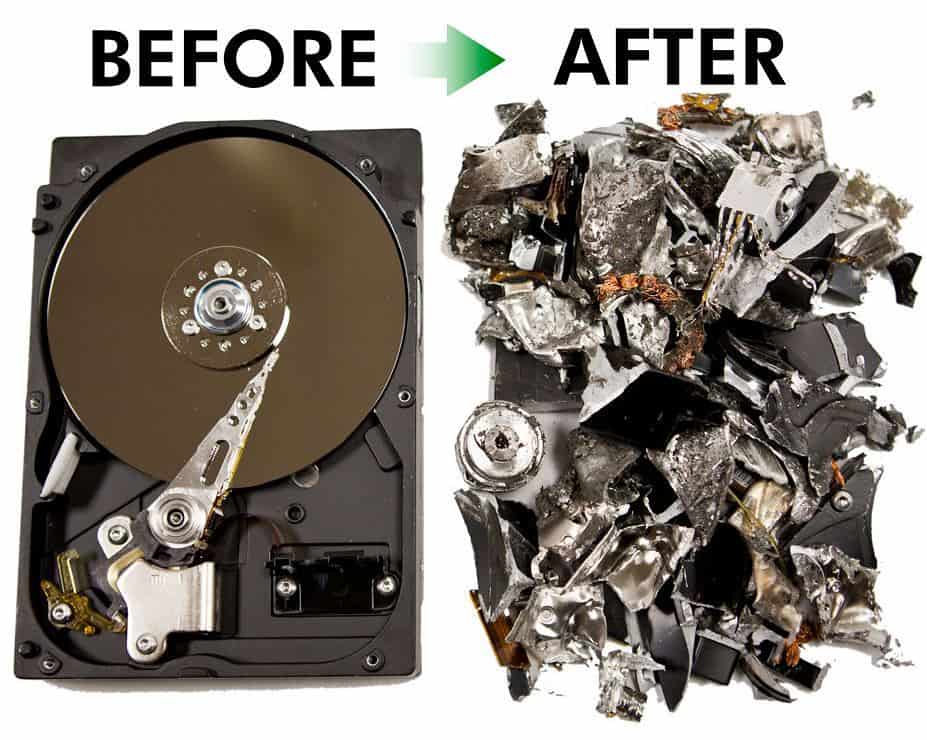How to Incorporate Data Destruction Techniques right into Your Cyber Security Approach
How to Incorporate Data Destruction Techniques right into Your Cyber Security Approach
Blog Article
Exploring the Relevance of Data Damage in the Context of Computer Safety And Security Services and Protecting Confidential Data
In an era where information violations are significantly usual, the relevance of efficient data damage can not be overstated. Organizations must adopt rigorous actions to make sure that sensitive information is not only protected throughout its lifecycle however likewise decisively gotten rid of when no much longer needed. The techniques employed for information removal, coupled with conformity to lawful standards, play a crucial function in maintaining discretion and count on. The effects of these practices expand beyond plain compliance, affecting a firm's track record and functional integrity in the electronic marketplace. What methods can organizations execute to boost their data devastation protocols?
Recognizing Data Damage
Information devastation is a vital part of computer system safety and security that includes the irreversible elimination of data from storage gadgets to stop unapproved access and potential data breaches. In a progressively electronic landscape, companies encounter heightened risks related to sensitive info being incorrectly accessed or made use of. Effective data damage safeguards against these dangers, making sure that personal dataâEUR" such as consumer details, copyright, and monetary recordsâEUR" can not be recuperated after disposal.
Comprehending the value of data damage extends beyond mere compliance with governing and lawful structures; it is necessary for preserving organizational integrity and trust. When information is poorly taken care of or improperly ruined, the consequences can be severe, consisting of economic loss, reputational damage, and legal liabilities.

Methods of Data Obliteration

One widespread approach is data wiping, which involves overwriting existing information with arbitrary patterns several times. This method provides the initial information irretrievable, making it a prominent selection for companies seeking to protect personal details.
One more method is degaussing, which utilizes a powerful magnetic area to interrupt the magnetic domains on storage space tools, efficiently removing the data. This method is especially effective for magnetic media but is not appropriate to solid-state drives.
Physical destruction is another durable approach, crushing or involving the shredding of storage space tools. This technique assurances that data recuperation is basically difficult, making it suitable for extremely sensitive details.
Last but not least, security can work as a complementary approach to data obliteration. By securing data before removal, organizations can add an added layer of security, ensuring that also if residues are recuperated, they stay inaccessible without the decryption trick. Each approach needs to be selected based upon the level of information sensitivity and the particular protection demands of the company.
Legal Compliance and Information Protection
Organizations have to navigate a complex landscape of legal demands associated to information safety, especially after implementing techniques of data eradication. Different guidelines, such as the General Data Protection Policy (GDPR) and the Medical Insurance Transportability and Liability Act (HIPAA), impose rigid standards on how organizations must manage and get rid of of sensitive data. Failing to abide with these policies can bring about considerable lawful effects, consisting of significant penalties and reputational damage.
Information devastation procedures have to important source be diligently recorded to demonstrate conformity with relevant legislations and requirements. This paperwork not just acts as evidence of adherence to lawful obligations however likewise highlights a dedication to guarding delicate info. Organizations must likewise develop clear plans regarding information retention and destruction timelines, guaranteeing that data is not held longer than essential.

Additionally, regular audits and evaluations of data destruction practices are necessary to keep compliance and adjust to progressing lawful structures (data destruction). By proactively attending to legal demands, organizations can mitigate risks related to information breaches and show their commitment to information security. Inevitably, focusing on legal conformity in data damage processes is not simply a regulative commitment, however an essential element of a durable data safety and security approach
Effect On Organization Reputation
The track record of a service can be significantly impacted by its technique to information damage and management. In today's digital landscape, where information violations can occur anytime, the failure to effectively take care of sensitive info can cause severe effects. Organizations that inadequately take care of information destruction danger revealing confidential consumer information, which not only breaches personal privacy laws however additionally erodes trust among clients and stakeholders.
A damaged reputation can cause decreased client commitment, as clients become reluctant to involve with a business that has shown carelessness in safeguarding their data. Negative promotion bordering an information breach can have a long lasting effect, as potential customers may be hindered by the perceived lack of protection. This can result in a straight decrease in income and market share.
Additionally, organizations that prioritize information devastation as component of their safety approach can enhance their reputation by showcasing their commitment to guarding delicate info. By adopting rigorous information monitoring methods, companies can not only reduce risks but also position themselves as reliable entities in their respective sectors, therefore enhancing their overall Homepage brand name photo.

Finest Practices for Secure Disposal
Implementing ideal techniques for safe disposal of data is crucial for reducing threats related to information violations and making sure compliance with personal privacy laws. Organizations needs to take on a detailed data disposal plan that outlines treatments for both physical and electronic information devastation.
For physical information storage tools, such as hard disk drives, shredding or degaussing is advised to stop data healing. In addition, companies should maintain a chain of custodianship documents during the disposal process, making certain responsibility and traceability of disposed things.
For digital data, using software program that adheres to market requirements for information wiping is important. This software application must overwrite existing data multiple times, making recovery essentially difficult. It is also vital to confirm see the performance of the data destruction procedure through audits or third-party evaluations.
Training staff members on secure disposal methods includes another layer of protection, as human error can usually lead to data exposure. Frequently examining and updating disposal plans makes certain placement with advancing guidelines and technological improvements. By applying these best practices, companies can considerably minimize the threat of unapproved data access and boost their overall information protection approach.
Final Thought
Finally, information destruction is a basic element of computer system protection services that makes certain the security of secret information from unauthorized gain access to. Executing effective methods of information elimination, adhering to legal conformity, and identifying the influence on company credibility are vital components of a comprehensive information safety technique. By adopting ideal methods for protected disposal, companies can cultivate count on with clients and secure sensitive data, inevitably adding to a more safe and secure digital landscape.
In an era where information breaches are significantly typical, the significance of reliable data devastation can not be overstated.Information damage is a vital component of computer security that includes the permanent elimination of information from storage tools to avoid unapproved access and possible data breaches. Organizations should likewise develop clear policies relating to data retention and damage timelines, ensuring that data is not held longer than essential.
By proactively dealing with lawful needs, organizations can alleviate threats associated with information violations and demonstrate their commitment to data protection (data destruction). Ultimately, prioritizing lawful conformity in data destruction processes is not simply a governing obligation, however a basic aspect of a robust data safety approach
Report this page